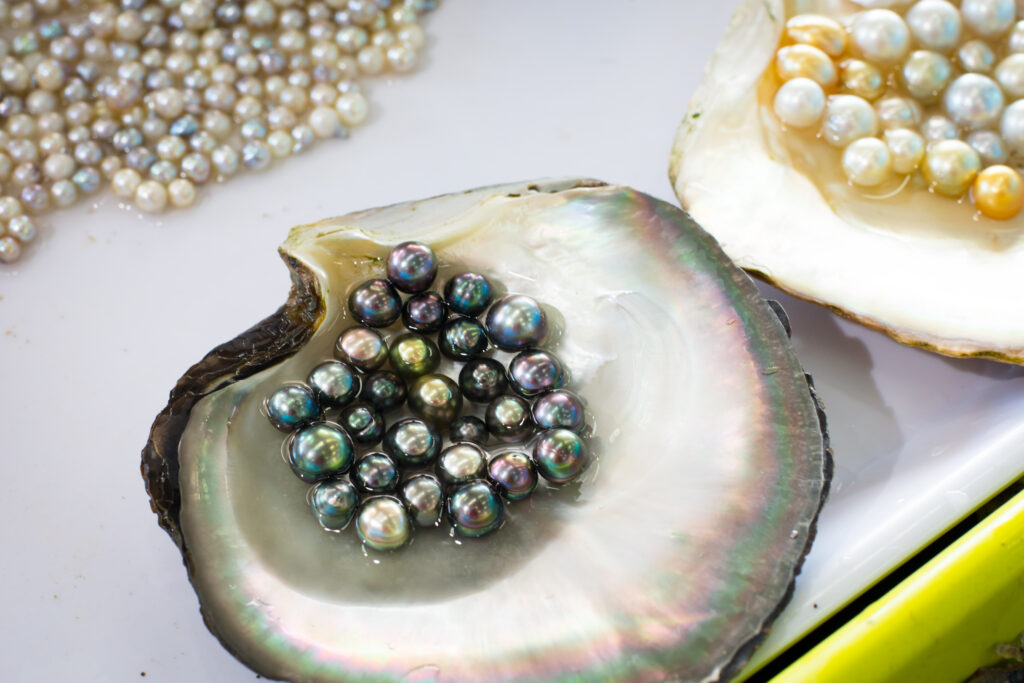If you love to eat oysters, you may have been lucky enough to come across a small pearl at one time or another. Oysters aren’t the only ones that can form them, as pearls are also found in mussels and clams. However, pearls are most commonly associated with oysters.
A pearl is formed when an irritant, such as a tiny grain of sand, finds its way into the shell of the oyster. The oyster will react by coating the irritant with its own secretion. The oyster will continue to do this so the longer it is in there with the oyster, the larger the pearl will become.
Most people who stumble upon a lucky pearl only get a very tiny one, since the oyster hasn’t had enough time to truly layer it in multiple secretions. The biggest pearls are often sold and there is an entire industry behind making pearl necklaces and other jewelry from real oyster pearls.

How Does an Oyster Form a Black Pearl?
The black pearl is exquisitely rare and far more expensive and valuable than a regular pearl. It is formed in the exact same way, however, it’s a matter of where it gets stuck in the oyster’s shell and that oyster has to be a Tahitian Black-Lipped Oyster,
Black pearls are generally formed when an irritant makes its way into an oyster’s shell habitat and gets stuck in the nacre. That can happen with a black-lipped oyster as well. However, with a black-lipped oyster, there is a band of black running through the inner lining of the shell.
If the irritant gets stuck in the black band, the oyster will do what it always does, secrete a coating over the irritant except for this time, it will begin to form a black pearl rather than a white one. The longer the oyster has with the irritant, the larger and more valuable the black pearl.
Does an Oyster Die when the Pearl is Removed?
If it’s removed by someone who is shucking oysters for sustenance then yes, the oyster will certainly die. However, there are those who make a living by injecting irritants into the shells of oysters for the sole purpose of creating pearls.
These professional “pearl-makers” (for lack of a better term) know how to extract the pearl without causing any undue harm or stress to the oyster. That means pearls can essentially be manufactured by using the oyster and not actually harming it in the process.
Of course, the fact that there are industries that farm oysters and create pearls by using them, means that pearls are nowhere near as rare as they used to be. That includes black pearls as well.
Now that we can make them, the wonder and allure of finding a pearl are somewhat diluted.








